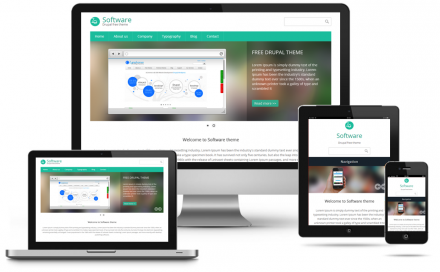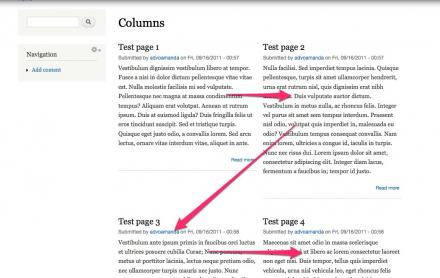

Within the configuration page, you can set whether tables generated by Drupal’s Views should be responsive, and whether to apply a CSS class that helps distribute content: So we created a custom module, the Tablesaw Filter, enabled by default.

When we implemented this approach in the Kit, we wanted to give website developers control over responsive tables. The table above would look like this on narrow screens: Tablesaw uses JavaScript to print column headings with each cell and then stack the row so that items appear vertically, rather than horizontally, on smaller screens.

The design firm behind the homepage redesign, Springbox, selected the Filament Group‘s “ Tablesaw” approach, and when we set out to build a Drupal distribution for the UT community, we concurred with that decision. There are a number of approaches that tackle this challenge. How, for example, should the following table fit into a portrait-oriented phone display and still be readable? To qualify as fully responsive, that means that tables also need to fit. Regardless whether it’s viewed on a desktop, tablet, or smart phone, content fits intelligently to the screen width. Whereas a desktop version will be able to see all the columns.One big advantage of building a website with UT Drupal Kit is that, out of the box, your site is fully responsive. Columns with Low priority are displayed only if they can fit into the screen size. You can set priorities (High, Medium and Low) to table columns depending on the importance of the column. Now all tables are responsive and mobile friendly with Drupal 8. So with Drupal 8, your images in your website will resize itself automatically depending on what device is viewing it. Responsive images module use breakpoints to identify what style and sizes to display at what point. Using Breakpoints, you can define the sizes of the image as per the viewing device. Breakpoints are width and height trackers that define at what point the element should resize itself depending on the viewport or the size of the device viewing it. The Breakpoints and Responsive Images modules come included with Drupal 8 Core although not enabled by default. You will also find many sleek and suitable contributed themes that you can easily use with Drupal 8. Built-in themes such as Bartik and Seven are 100% responsive and easy to implement. All elements like menus and blocks also resize themselves to look great on a mobile device. You can design fully responsive website that will fit beautifully into all screen sizes. Now all themes that come built-in with Drupal 8 core are responsive. WYSIWYG editor also responds to your screen size making content creation and editing a breeze. The admin toolbar automatically expands and collapses and orients itself depending on the screen size. Administration can now be done with ease while you’re on the move! Installation and configuring modules can now be carried out easily on a mobile phone. Responsive Design for Adminsįor an Admin, adding and editing content through a mobile device is now even easier and user-friendly. Not only for users, Drupal 8 is also responsive and provides a mobile-first approach to content managers and editors.
#DRUPAL VIEW RESPONSIVE COLUMNS UPGRADE#
It is an upgrade and the responsive elements come out-of-the-box with Drupal 8 core. With Drupal 8, a responsive design is not an option anymore. How is Drupal 8 complying with the Mobile-First strategy? Drupal 8 has extensively concentrated on getting Mobile ready and responsive ready seamlessly and conveniently. As mobile phones are the most frequently used and preferred devices these days, this strategy emphasizes on the need for responsive design where mobile users get an uninterrupted, consistent and a flawless online experience. So, if yours is one of those mobile incompetent websites, it is high time to get responsive and start building your website on Drupal 8 for an effective mobile-first experience.Īlso known as “Progressive enhancement”, the Mobile-First strategy is an approach that advocates that designing and developing should be strategized keeping smaller screens in mind first. According to statistics, one out of five people in the world own a smartphone and the number keeps increasing by the day. How many times have you zoomed and pinched your phone screen just to navigate through a website on your phone? Although many websites have taken the Mobile-first approach, I still manage to lay my hands on those annoying few left out there.


 0 kommentar(er)
0 kommentar(er)
